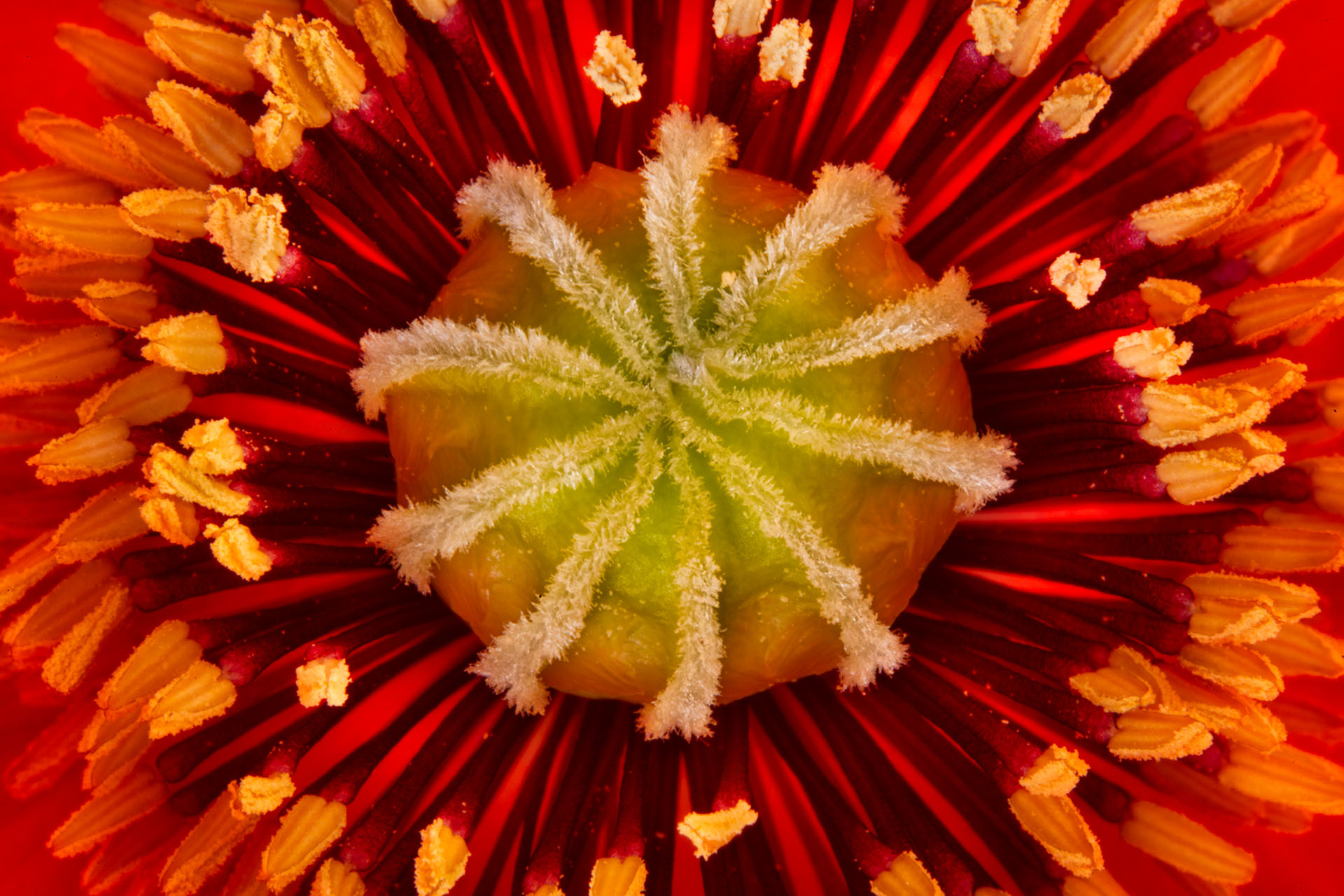Waking up to a morning of partial sunshine, I saw this new, glowing, orange Poppy blossom in the plantings along our front porch. It was definitely dappled and dawn-drawn. Although I have met and photographed many fine Papavers in my life, this one seemed nearly perfect to me in every way.

If you are interested in how I photographed this flower, I brought it indoors and suspended it over a black velvet background. I used diffused sunlight for ambient backlighting, and added an LED macro flash for fill from both sides. The camera was my D850 on a heavy-duty RRS tripod. I used 60mm of extension tubes with my 85mm Nikkor t/s macro. A +4 close-up filter graced the business end of the lens.
I exposed for 30 seconds at ISO 64 and an effective aperture of f/64.
Kelly Cannon
15 Jun 2019Lovely closeup, Harold. I’m trying to work out how you computed f/64 and I think it must have been 4 times an f/16 aperture setting. Am I right?
Harold Davis
15 Jun 2019Kelly, f/64 is what the EXIF data recorded. It is what is called an “effective aperture.” Here’s what this means. The lens is a macro lens with designated f-stops down to f/45 (which is of course already a smaller aperture opening than most lenses have). As you focus down into macro territory the barrel of the lens gets longer, and less lights comes in. This reduces the effective aperture, which is what the data saved by camera’s EXIF recorder. To be truly complete, I could have listed this as “nominal aperture f/45, effective aperture f/64.” (And, sorry, this has nothing to do with 4 * f/16 other than numerical coincidence!) Very best wishes, Harold
Kelly Cannon
15 Jun 2019Ah, that makes sense. I thought perhaps some combination of extension tubes and a closeup filter might result in an effectively smaller aperture, but I didn’t see how that could be. I’m glad to know it was the lens and not my failure to understand the optics involved. Thanks!